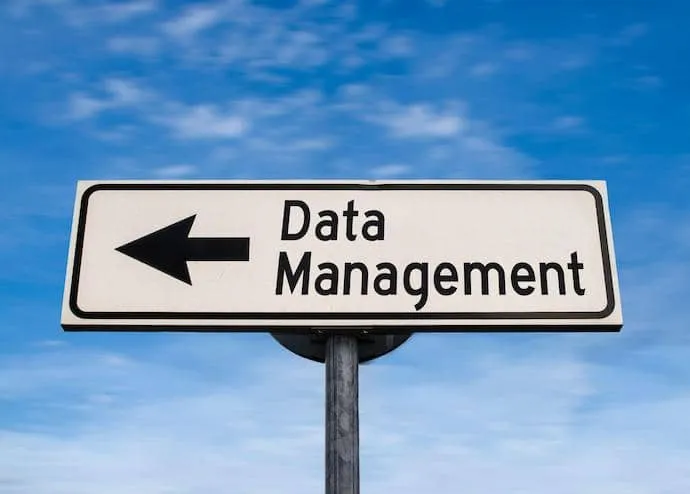The emerging risks of open source

Many enterprises have sought to make their open source lives easier by buying
into managed services. It’s a great short-term fix, but it doesn’t solve the
long-term issue of sustainability. No, the cloud hyperscalers aren’t strip
miners, nefariously preying on the code of unsuspecting developers. But too
often some teams fail to plan to contribute back to the projects upon which they
depend. I stress some, as this tends to not be a corporation-wide issue, no
matter the vendor. I’ve detailed this previously. Regardless, the companies
offering these managed services tend to not have any control over the projects’
road maps. That’s not great for enterprises that want to control risk. Google is
a notable exception—it tends to contribute a lot to key projects. Nor can they
necessarily contribute directly to projects. As Mugrage indicates, for companies
like Netflix or Facebook (Meta) that open source big projects, these “open
source releases are almost a matter of employer branding—a way to show off their
engineering chops to potential employees,” which means “you’re likely to have
very little sway over future developments.”
How to model uncertainty with Dempster-Shafer’s theory?

One of the main advantages of this theory is that we can utilize it for
generating a degree of belief by taking all the evidence into account. This
evidence can be obtained from different sources. The degree of belief using this
theory can be calculated by a mathematical function called the belief function.
We can also think of this theory as a generalization of the Bayesian theory of
subjective probability. While talking about the degree of belief in some cases
we find them as the property of probability and in some cases, they are not
mathematical. Using this theory we can make answers to the questions that have
been generated using the probability theory. This theory mainly consists of two
fundamentals: Degree of belief and plausibility. We can understand this theory
using some examples. Let’s say we have a person diagnosed with covid-19 symptoms
and have a belief of 0.5 for a proposition that the person is suffering from
covid-19. This will mean that we have evidence that makes us think strongly that
the person is suffering from covid(a proposition is true) with a confidence of
0.5. However, there is a contradiction that a person is not suffering from covid
with a confidence of 0.2.
The Other AI: Augmented Intelligence

With a clear view of the benefits augmented intelligence delivered by AR can
provide, you may be excited to get started within your enterprise but unsure of
where to begin. First, it's important to start by speaking to your field
technicians and service agents to gauge their interest or any potential aversion
to implementing the technology into their workspace. New technology can be
intimidating to field service technicians who are used to completing tasks a
certain way. Helping them to understand how the technology can enhance their
jobs and make service experiences less challenging and more engaging will be
key. Next, consider which devices are needed to implement the augmented
intelligence platform. At a basic level, a smartphone or tablet is needed.
Hands-free wearable glasses make it easier for technicians to accomplish tasks
in the field and on the factory floor. Drone support goes even further with AR
visual awareness and graphical guidance not previously available. Finally,
you'll want to confirm the bandwidth and connectivity requirements of the
augmented intelligence AR platform and associated devices to ensure your field
service technicians are set up for success.
Writing Code Is One Thing, Learning to Be a Software Engineer Is Another

Software developers are always students of software development and whenever you
think you know what you are doing, it will punch you in the face. Good
developers are humble because software development crushes overconfidence with
embarrassing mistakes. You cannot avoid mistakes, problems and disasters.
Therefore, you need to be humble to acknowledge mistakes and need a team to help
you find and fix them. When you start as a developer, you focus on creating code
to meet the requirements. I used to think being a developer was just writing
code. Software development has many other aspects to it, from design,
architecture, unit testing to DevOps and ALM. Gathering requirements and
clarifying assumption. There are many best practices such as SOLID principles,
DRY (Don’t repeat yourself), KISS, and others. The best practices and
fundamental skills have long-term benefits. This makes them hard for junior
developers to understand because there is no initial benefit. Well-named code,
designed to be easily tested, isn’t first draft code. It does more than work.
It’s built to be easy to read, understand and change.
AI Set to Disrupt Traditional Data Management Practices

“They often don’t have the skill sets, or their organizations don’t put in place
processes and tools and practices to really manage data management for AI
specifically,” says Sallam. “So data-centric AI has the potential to disrupt
what has been traditional data management practices as well as prevalent
model-centric data science by making sure that AI-specific considerations like
data bias, labeling, drift, are all in place in a consistent manner to improve
the quality of models on an ongoing basis.” Are tools under development to
address this need, or are organizations investing in solutions for it? Sallam
says that some of the other trends on the list will contribute to improving data
management around AI. Specifically, to address this gap, leading organizations
are disrupting data management for AI by building out data fabrics on active
metadata and investing in things like AI governance, she said. This data-centric
AI trend is one of several Gartner highlighted in its report for 2022 and
grouped with a few others under the title of activating dynamism and
diversity.
Growing prospects for edge datacentres
Edge operations require user organisations and suppliers to think beyond
infrastructure and architectural needs. New automation and orchestration
challenges will arise, often across transactional boundaries and occurring
between different companies and industries, rather than just different parts of
the network. They must also think about ownership of the software and
infrastructure stack and the likely path of service engagement – be that through
a telecoms operator, hyperscale public cloud provider or others. Providers of
edge operational services also need to decide how they support multiple
customers according to their individual needs. This will be especially necessary
for applying operational-specific AI algorithms, and may result in multi-layered
partner offerings. All this will require organisations to think more carefully
about how they extend their datacentre operations to enable greater levels of
edge processing, work with cloud providers or hook into another provider’s edge
datacentre network. The biggest drivers for edge datacentres are coming from
industry sectors where edge operations are already well established.
The Metaverse needs to keep an eye on privacy to avoid Meta’s mistakes

Metaverse avatars are a conglomeration of all issues relating to privacy in the
digital realm. As a user’s gateway to all Metaverse interactions, they can also
offer platforms a lot of personal data to collect, especially if their tech
stack involves biometric data, like tracking users’ facial features and
expressions for the avatar’s own emotes. The risk of someone hacking biometric
data is far scarier than hacking shopping preferences. Biometrics are often used
as an extra security precaution, such as when you authorize payment on your
phone using your fingerprint. Imagine someone stealing your fingerprints and
draining your card with a bunch of transfers. Such breaches are not unheard of:
In 2019, hackers got their hands on the biometric data of 28 million people.
It’s scary to think about how traditional digital marketing might look in the
Metaverse. Have you ever shopped for shoes online and then suddenly noticed your
Facebook is filled with ads for similar footwear? That’s a result of advertisers
using both cookies and your IP address to personalize your ads.
The Most In-Demand Cyber Skill for 2022

Just when everybody hoped that the security environment could not be more
challenging, recent world events have created a further substantial uptick in
cyber-attacks. This has also increased the sense that maybe we should all care
more about the security of everything we ever purchased and placed in the cloud.
Not so much buyer’s remorse as a penitent desire to security upcycle anything in
the cloud that might be more critical to the organization once the current
threat landscape is taken into consideration. Zero trust, extended detection and
threat response (XDR), SASE (secure access service edge) – almost all the
hottest topics are about how to take the security standards that were
(once-upon-a-time) applied as standard to traditional networks and *seamlessly*
implement them across cloudenvironments. The number one position for cloud
computing makes sense. It reflects the growing concern about cloud security and
the gradual evolution of the requirement to ensure that each organization has a
consistent security architecture that extends over and includes any important
cloud solutions and services in use.
How SaaS Models Changed Content Creation

Content creation used to be a difficult, arduous and manual process. Creative
visions were consistently hampered by workflow and technological limitations.
The dilemmas of our past were based on technical feasibility. Now, those
restrictions have become completely unshackled. It’s no longer a question of
what’s possible to do, but rather what you want to do, and which path do you
take to get there? SaaS evened the playing field. To understand what is possible
now and what is yet to come, it’s important to distinguish between two areas
within the umbrella-use of SaaS. First, we have true software as a service,
which is software that runs on the internet and is accessed in the cloud. Google
Workspace is an example of this, allowing users to create spreadsheets,
documents and presentations that are stored on Google’s servers. (Disclosure: My
company has a partnership with Google.) The software runs as a service for you
to connect to from any device and edit your documents anywhere. It's persistent
regardless of the computer you’re on, and documents can be edited by multiple
users, even simultaneously.
Data parallelism vs. model parallelism – How do they differ in distributed training?
In data parallelism, the dataset is split into ‘N’ parts, where ‘N’ is the
number of GPUs. These parts are then assigned to parallel computational
machines. Post that, gradients are calculated for each copy of the model,
after which all the models exchange the gradients. In the end, the values of
these gradients are averaged. For every GPU or node, the same parameters are
used for the forward propagation. A small batch of data is sent to every node,
and the gradient is computed normally and sent back to the main node. There
are two strategies using which distributed training is practised called
synchronous and asynchronous. ... In model parallelism, every model is
partitioned into ‘N’ parts, just like data parallelism, where ‘N’ is the
number of GPUs. Each model is then placed on an individual GPU. The batch of
GPUs is then calculated sequentially in this manner, starting with GPU#0,
GPU#1 and continuing until GPU#N. This is forward propagation. Backward
propagation on the other end begins with the reverse, GPU#N and ends at GPU#0.
Model parallelism has some obvious benefits. It can be used to train a model
such that it does not fit into just a single GPU.
Quote for the day:
"At the heart of great leadership is a
curious mind, heart, and spirit." -- Chip Conley
No comments:
Post a Comment